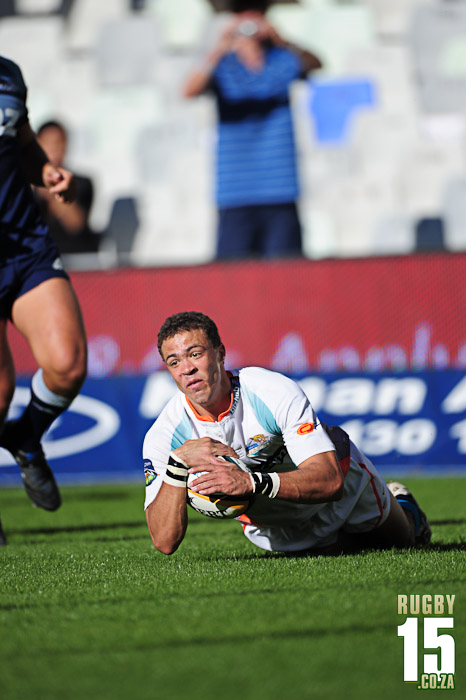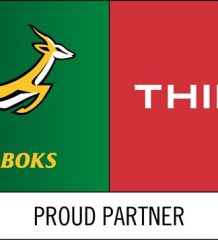Full decision of the Judicial Committee in Ralepelle and Basson Hearing

CHILIBOY RALEPELLE
DECISION OF A SARU JUDICIAL COMMITTEE IN THE MATTER OF MAHLATSE CHILIBOY RALEPELLE AND BJORN BASSON
COMMITTEE:
Adv J Lubbe SC
Dr G van Dugteren
Adv R Stelzner SC
DATE AND VENUE OF HEARING
25 January 2011 at SARU Head Office, Newlands, Cape Town
PRESENT
Mahlatse Chiliboy Ralepelle
Bjorn Alberic Basson
Adv A Heyns instructed by
Mr G Swart from the firm Avenant Rappoport
Mr F Galant from SAIDS as an observer
Mr Eugene Henning from SARPA as observer
Mr C Ferreira Legal Manager SARU
Dr I Jakoet from SARU as an observer
INTRODUCTION
[1] Mahlatse Chiliboy Ralepelle and Bjorn Alberic Basson (“the Players”) are charged in terms of the Anti-Doping Regulations of SARU in that they allegedly committed an anti-doping rule violation in terms of Regulation 21.2.1 (a) of the IRB Anti-Doping Regulations read with Regulation 2.1 of SARU’s Anti-Doping Regulations.
[2] The Players were tested on 6 November 2010 in competition after the test match played between Ireland and South Africa in Dublin on the same date. The analytical reports from Deutsche Sporthochschule Koln dated 11 November 2010 confirmed the presence of Methylhexaneamine (MHA) in the urine samples provided by both Players. The documentation was reviewed by Gregor Nicholson and Dr Barry O’Driscoll and they concluded in a report dated 13 November 2010 that an anti-doping rule violation may have been committed by the Players.
[3] Both Players opted to request an analysis of their B samples and both B samples again tested positive for the presence of MHA on 1 December 2010.
[4] In terms of section 2.3 (b) of the Disciplinary Rules and Anti-Doping Programme Applying to the Autumn Internationals both Players in writing elected to have SARU to conduct the appropriate investigation and hearing. Both Players also agreed in terms of the said section that no issue was to be taken by them at the hearing as to the qualifications or authority of any official or anti Doping Control/collection Agency or WADA-accredited laboratory, sample collection procedures, custody or transmission of any sample and analysis of any sample by a WADA-accredited laboratory.

Bjorn Basson
PRE-TRIAL HEARING
[5] A pre-trial hearing was held on 17 January 2011 between the Committee and the legal representatives of the Players. At the hearing the Committee was informed that the test results are not in issue, that evidence will be presented by way of affidavit on condition that the deponents must be available for questioning by the Committee and that the legal representatives would file a written plea explanation and a summary of the testimony of any expert witnesses before the hearing.
HEARING
[6] The hearing commenced on Tuesday 25 January 2011 at the offices of SARU, Cape Town. In their written plea explanation the Players admitted the alleged anti-doping rule violation. They further stated that they sought application of the lex mitior principle and asked for a finding that the prohibited substance be regarded as a specified substance as opposed to an unspecified substance. It was further stated on behalf of the Players that they would submit evidence to prove how the prohibited substance entered their bodies, that the use of the prohibited substance was not intended to enhance their performance and was not intended to mask the use of a prohibited performance enhancing substance.
IN LIMINE
[7] It is common cause that the IRB on 18 September 2010 accepted the 2011 Prohibited List which was due to come into force on 1 January 2011. In terms of the 2011 Prohibited List MHA was re-classified as a specified substance from 1 January 2011. The Players were tested on 6 November 2010.
[8] Mr Heyns submitted in limine that we should accept the lex mitior principle for the purposes of the hearing. He presented the committee with comprehensive written argument in this regard referring the committee inter alia to:
The advisory opinion of the Court of Arbitration for Sport (“CAS”) 94/128 rendered on 5 January 1995, UCI and CONI (Digest of CAS Awards (1986-1998), p. 477 at 491. WADA v Jessica Hardy & United States Anti-Doping Agency (“USADA”) CAS 2009/A/1870 at par 16, pg 18 United Kingdom Anti-Doping (“UKAD”) v Rachel Wallader (the “Wallader case”) 2010/2011, 1st Quarter at para 5
UKAD v Steven Lee Dooler 2010/2011, 2nd Quarter at par 2.4.
[9] Mr Heyns further pointed out that the lex mitior principle finds expression in the South African common law as the principle of nulla poena sine lege, especially in respect of the ius praevium principle (which provide that if the punishment to be imposed is changed before the accused is sentenced the old punishment must not be applied to the detriment of the accused) and referred the committee to section 35(3)(n) of the Constitution of the Republic of South Africa which provides (in criminal context) that an accused has a right to benefit from the least severe of the prescribed punishments, where the prescribed punishment has changed from the time that the offence was committed to the time when the sentence is to be imposed.
[10] We ruled that the lex mitior principle applies and that the prohibited substance should for the purposes of this hearing be regarded as specified substance.
[11] In terms of IRB Regulation 21.22.3 where the prohibited substance is a specified substance according to the said list, the player can eliminate or reduce the standard period of ineligibility by establishing how the specified substance entered the player’s body, proving to the comfortable satisfaction of the tribunal an absence of intent to enhance performance and producing corroborating evidence to the comfortable satisfaction of the tribunal of the absence of intent to enhance the player’s sporting performance.
[12] In assessing whether or not to reduce the period of ineligibility the tribunal will consider the degree of the player’s fault. Regulation 21.22.4 deals with no fault or negligence and Regulation 2.22.5 with no significant fault or negligence for the rule violation.
THE EVIDENCE
[13] Mr Heyns on behalf of the Players presented evidence to the Committee by way of sworn statements and also called most of the deponents to testify in support of the Players’ case. We do not intend to deal with the evidence of each and every witness (their evidence being available in their affidavits and electronically) save to state that we have no reason to doubt the credibility of any of the witnesses, including the evidence of the two Players, and that the full conspectus thereof has been taken into account in reaching our finding.
[14] The essential facts are not in dispute and can be summarised as follows.
The Players, together with the rest of the Springbok team, consumed a nutritional supplement Anabolic Nitro Nitric Oxide Extreme Energy Surge (“the supplement”) on instructions from the conditioning coach Mr Liebel prior to the warm up for the test match on 6 November 2010 against Ireland and again during halftime.
The supplement contained the prohibited substance MHA.
The Players took the supplement well knowing that they and their team mates had safely used the same supplement during the earlier part of the season during the Super 14 and Currie Cup competitions.
The Springbok team took the supplement prior to the November tour during the home leg of the Tri Nations Tournament in August 2010 without any adverse analytical finding from players tested.
Guthrö Steenkamp, one of Mr Ralepelle’s team mates at the Bulls, who according to him had also taken the supplement at the time of this Tournament, was tested with no positive result for MHA. The tribunal was provided with Mr Steenkamp’s report in this regard.
At the time of the Tri Nations Tournament the team was supplied with a batch of the supplements produced in South Africa.
Mr Liebel testified that he had several meetings with the supplier to ensure the safety of the product and compliance with WADA before he introduced the supplement to the Springbok team.
He conceded during his testimony that the certificate supplied by the supplier did not make mention of MHA but stressed that he was satisfied with the safety of the product as it was used by the Blue Bulls and none of their players, who were tested during the early part of the 2010 season, tested positive for any prohibited substance.
His belief that the supplement was safe was strengthened during the Tri Nations competition when no player tested returned a positive result.
When the Springboks toured Ireland and the UK, the team was supplied with a batch of the supplement manufactured in the UK.
The supplier provided a certificate to Mr Liebel from a reputable laboratory, HFL Testing Laboratory in Cambridge, ostensibly in order to prove that the supplement of the particular batch complied with WADA requirements.
After the two Players returned positive tests for the prohibited substance MHA, a sample from the batch supplied in the UK and a sample from the batch produced in South Africa were tested by a WADA accredited laboratory in Bloemfontein, South Africa on 26 November and 8 December respectively.
The sample manufactured in South Africa tested negative and the UK sample tested positive for MHA.
The UK batch (being the one used by the Players on the UK tour) was sealed immediately after the team was informed of the test results of the two Players and delivered to South Africa in a manner which leaves no room for finding that the UK batch could have been tampered with –
o Mr Readhead, SARU Manager Medical, instructed that all supplements and medicines be confiscated and quarantined and returned to South Africa for testing immediately after the team was informed of the test results.
o Dr Craig Roberts, the team doctor placed the supplements and medication in a container and sealed the container with plaster.
o He handed the container to Mr Coris Zietsman, SARU Assistant Manager Competitions and Kit who brought the container with him from the UK and handed the container to Mr JJ Fredericks in Cape Town.
o Mr Fredericks delivered the sealed container to Mr Readhead at SARU who in turn handed sealed samples of the supplement to Mr Galant from SAIDS.
o Mr Galant then arranged for the testing of the samples with the laboratory in Bloemfontein.
[15] We were informed by Dr Jakoet that SARU has guidelines in place regarding the use of supplements by players and that the supply of supplements by the Springbok medical team was not in line with the said guidelines. According to him the guidelines are posted on the official website of SARU and are accessible to the players and the public.
[16] The guidelines, which were not introduced by SARU at the hearing itself, and which the Players accordingly did not have an opportunity of dealing with, are to be found at http://images.supersport.co.za/SUPPLEMENTGUIDESAR08.doc.are dated December 2006 and housed under the medical tab on the SARU official website.
[17] They do not prohibit the use of supplements outright. On the contrary the benefits of certain supplements are explained, the dangers of others averted to.
The guidelines conclude with the following cautionary remarks – “Presently there is no way to recommend with certainty that one particular brand is safer than another. Even if manufacturers of supplements claim that their supplements have been ‘approved’ or ‘verified’ or ‘tested to be free of contaminants’ – these are generally self-regulatory systems that are not fool-proof. We recommend that for every supplement purchased the athlete request the supplier to provide a quality control certificate as well as legally binding documentation listing all contents of ALL the different products that they produce and that the company accepts full liability for a positive doping test as a result of the use thereof. This guarantee document should: Be on a company letterhead. Be signed by management and dated. Include contact details for the person responsible for issuing the guarantee. Address the athlete directly by name, and not be addressed generally e.g. “To whom it may concern”.
[18] The guidelines end with a disclaimer – “SARU and SAIDS does(sic) not accept any liability for the consequences of an athlete taking any supplement product.”
[19] Because of the serious nature of the allegations against the supplier of the supplements, who was not represented at the hearing, the Committee requested Mr Ferreira from SARU to enquire from the representative of the supplier in South Africa, Mr de Villiers, whether he would be prepared to testify telephonically at the hearing. He reacted positively and his evidence was then taken telephonically as he is based in Midrand, Johannesburg.
[20] Mr de Villiers confirmed that his company supplied supplements to the Springboks during 2010 in South Africa and that for the UK tour the supplements were supplied by the UK based company. He advised that after the positive testing of the two Players he was requested by Mr Liebel to have the batch supplied by the UK company tested. Tests were conducted at a laboratory in Cologne which were inconclusive since according to him the laboratory was not able to test specifically for MHA. He also referred to the certificate (obtained by the supplier in September 2010 already and referred to above). When asked to comment on the positive test results from the laboratory in Bloemfontein he replied that he was not in a position to challenge the correctness of the results. Steps have been taken by his company to try and ensure that there would not be a repeat of what happened in Ireland.
SUBMISSIONS
[21] Mr Heyns filed written heads of argument running into twenty six pages. These were of great assistance to the Committee in reaching its decision. Our failure to deal with each and every argument is not out of disrespect but we found it unnecessary to do so as a result of the conclusions we have reached.
[22] In a well presented oral argument he further submitted that it had been established that the prohibited substance entered the bodies of the Players by means of a contaminated batch of supplements supplied to the Players by their own conditioning coach which subsequently led to the Player’s samples returning an adverse analytical finding for MHA.
[23] He submitted that the evidence clearly showed that there was no fault nor any negligence on the part of the Players. He listed a number of facts in support of his argument which included the fact that:
The players could not reasonably have been expected to have done any more than they did to satisfy themselves that the supplement in question contained no prohibited substance.
They relied on their conditioning coach and the managerial team of the Springbok squad to make the necessary investigations and satisfy themselves as to the safety of the product.
The conditioning coach had gone to extensive lengths to satisfy himself of the above (obtaining a certificate from a recognized laboratory, HFL, to this effect, albeit via the supplier and albeit not for MHA specifically).
The players (and the team) had used the product during the course of the year with no one in the Springbok squad previously having returned an adverse analytical finding.
the product in SA previously used by them proved to be free of MHA (both before and after their testing in the UK).
There was no reason to suspect that the product supplied to them in the UK contained MHA / was contaminated.
The Nitro taken by the players was not labelled in any manner which could indicate or raise suspicion that the supplements could contain a prohibited substance.
The Nitro had been taken by the team during the home leg of the Tri-Nations series and was taken by the players at their provincial teams for approximately one year prior to their being tested positive without any adverse results.
The players took care in not taking any supplements or medicine other than those approved and given / prescribed to them by the conditioning coach and team doctor.
[24] Mr Ferreira on behalf of SARU submitted that the Players could have refused to take the supplements and their decision to make use of the supplements must result in a degree of fault
on their side. He did not put the degree of fault higher than ten percent and suggested a sanction of a two month suspension but with retrospective effect from 6 November 2010.
FINDINGS
[25] We are comfortably satisfied that the Players have provided us with reliable evidence how the prohibited substance entered their bodies and that there is strong corroboration of their evidence by reliable third parties.
[26] We are also comfortably satisfied on the evidence of the Players and the conditioning coach that they had no intention to enhance their sporting performance through the use of a prohibited substance. It is clear that no member of the Springbok team, including the Players themselves, was aware before the two Players tested positive that the supplement contained MHA.
[27] We disagree with the submission of SARU that the Players were at fault and that they should have refused to make use of the supplement as the use of supplements were in breach of the SARU guidelines. The management of SARU knew that the medical team of the Springbok team supplied the players with supplements. SARU, one assumes, in fact paid for the supplements. If there is any blame to be apportioned in this matter, SARU should be blamed for not having the supplements tested more comprehensively (as required by their own guidelines – in particular the extract referred to above) and definitely not the players, who relied on the professional assistance and judgment of their medical team, and could in this Committee’s view not have been expected to take any other steps in the circumstances.
[28] On the facts set out in paragraphs [14] and [23] above we find that there was no fault on the part of the Players for the purposes of section 21.22.4.
[29] In conclusion we are in agreement with the submission by Mr Heyns that a reprimand is the appropriate sanction on the facts of this case. The Players have already suffered the ignominy of being sent home early from the overseas tour, provisionally suspended for nearly three months and having their doping charges made public with the concomitant embarrassment, uncertainty, personal anguish and damage to their reputations. All of this should serve as a deterrent for other players against the indiscriminate and careless use of supplements. Any further punishment for the Players in question would, however, be out of kilter with their lack of fault in the matter. The Players are nevertheless strictly liable and a reprimand is accordingly the appropriate sanction in the exceptional circumstances of this case.
[30] Both Players are accordingly reprimanded. They are informed that both they and the IRB are permitted to take this finding on review.
J Lubbe SC
For and on behalf of the Committee
Bloemfontein
Thursday, 27 January 2011
Related Posts
« “No fault” as Basson and Ralepelle cleared to play SA U20 Management team confirmed »
















